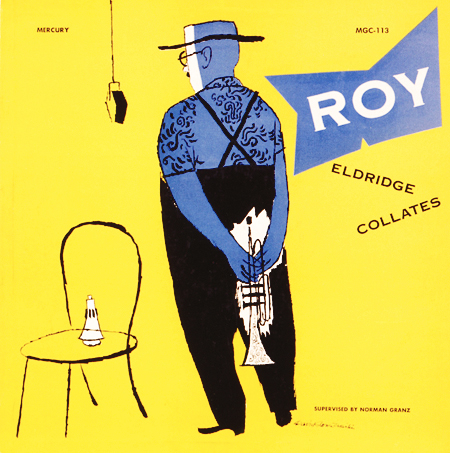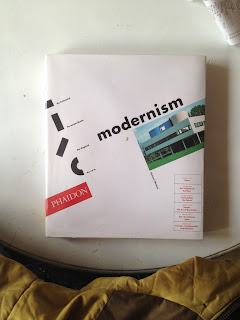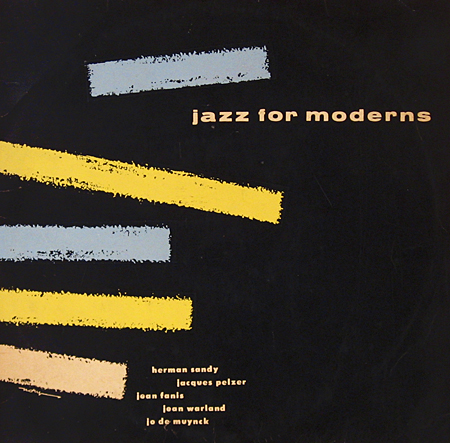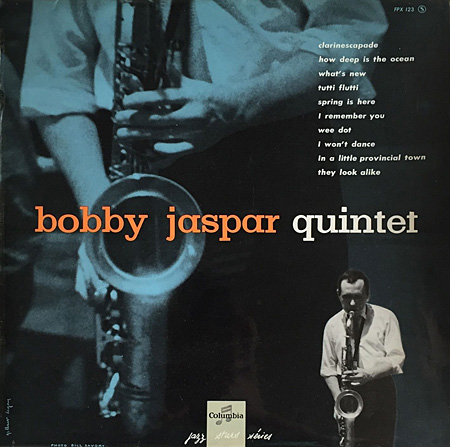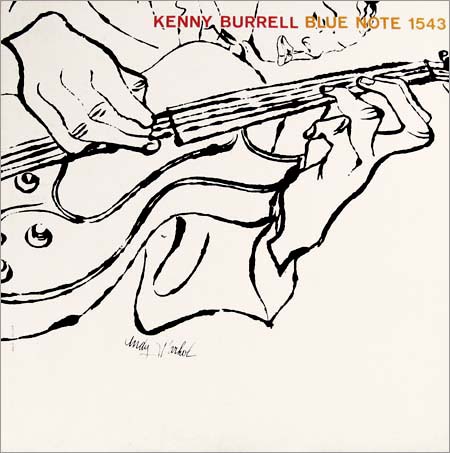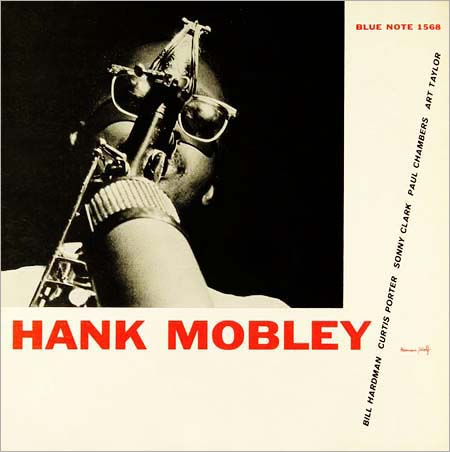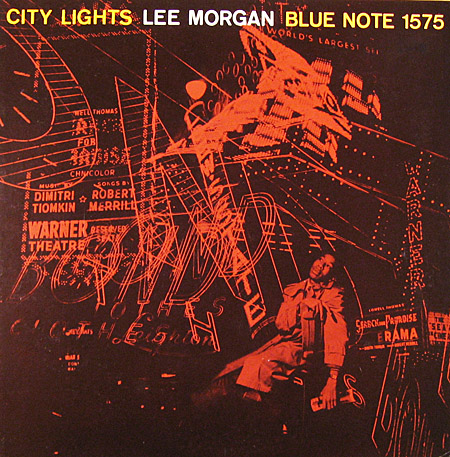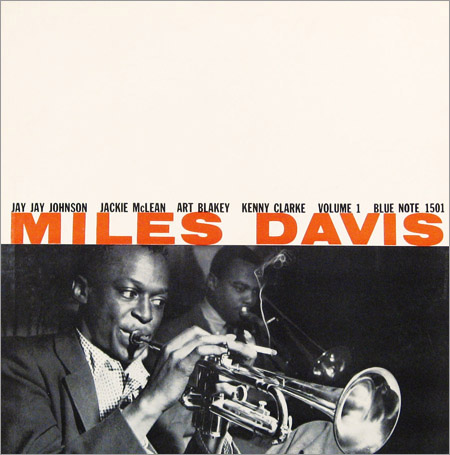In the essay To Stitch The Cut the author speaks a lot of two theorist and writers. He speaks about a lot of references, but these two are the most prominent people he refences. I haven't looked to closely into these two, but will make sure to do so when it comes to the actual writing on the essay.
Nicholas Cook
As a musicology lecturer of The University of Cambridge, he is a reputable and respectful source for referencing and using as a theorist. He is also not sure of any source materials, with around 15 published books.
http://www.mus.cam.ac.uk/directory/nicholas-cook
Alan Licht
As a preforming jazz artist, writer and theorist; I would struggle to find someone who with greater primary experience. With the word he writes being less theorised than Cook, he can be referenced less on his academia but more on his knowledge.
http://www.alanlicht.com/
Sunday, 15 November 2015
Andy Warhol; where the modernist becomes the designer
Andy Warhol, is a huge name in art; chances are, if you've heard of art, you've heard of him. But when he was a little less known, he was a designer. A designer peddling the forefront of the 1950's modernist era, illustrating and designing record covers alike.
His influences were clearly deriving from the modernist era he was operating in; with some covers showing an obvious intermedial link; such as the one above. With his illustration, he displayed the signature playing style that the artist had; I don't think there is possibly a greater example of intermedial contextualisation on a modernist record sleeve.
If ever there was ever a strong example of modernism on record sleeves, a sleeve designed exclusively with rough handwriting, in a time of large, bold, colourful imagery.
Friday, 6 November 2015
The prevalence of record sleeve design, when looking at it's presentation in the modern market
Once again, whilst reading The Colouring of Jazz by Carissa Kowalski Dougherty; a very valid point was raised and it's something something that I'd like to explore.
In the essay they explore the concept that record sleeves became highly popular in the 1950's, especially Jazz records because where there had been little variation and display in the past; there was now racks full of colourful, easily browsed records to touch and look at.
And saying that this change influenced sales seems like a very plausible hypothesis to me, and I highly doubt that it's wrong because it's exactly the reason I got into record collecting.
What I'd like to do is look at home, in this modern era I would browse digital music from a popular source and how I would browse tangible record sleeves, also from a popular source (high street store) to see whether – even though records make up a very small amount of stock for modern music shops – that they are still prevalent or whether they just stand out to the niche and collectors market.
iTunes
iTunes is by far the largest music retailer for digital music, so much so it's become a norm and milestone for an artist to sell their wares through the iTunes market.
Above is a screen shot I took of the opening screen for the iTunes Store of which reserves it's spaces for the best selling and newest content, with a hierarchy bowing to the bigger releases, then filtering down to the small releases and the best sellers; much like how records would have been previously structured in a shop.
For my argument I'm want to see if the traditional sleeve, the album cover design, had lost it's prevalence and importance in the modern day music market.
If you look at the image above, the album covers start at a 300x300 pixel square and progress to get smaller as their importance also shrinks; though the artist name and related text stays at a similar size.
This proves to reinforce the idea that in our modern day, the artists name and fame have more importance and draw than the design on the sleeve, because the way me consume the media has changed.
HMV
In the essay they explore the concept that record sleeves became highly popular in the 1950's, especially Jazz records because where there had been little variation and display in the past; there was now racks full of colourful, easily browsed records to touch and look at.
And saying that this change influenced sales seems like a very plausible hypothesis to me, and I highly doubt that it's wrong because it's exactly the reason I got into record collecting.
What I'd like to do is look at home, in this modern era I would browse digital music from a popular source and how I would browse tangible record sleeves, also from a popular source (high street store) to see whether – even though records make up a very small amount of stock for modern music shops – that they are still prevalent or whether they just stand out to the niche and collectors market.
iTunes
 |
| iTunes Store Homepage |
Above is a screen shot I took of the opening screen for the iTunes Store of which reserves it's spaces for the best selling and newest content, with a hierarchy bowing to the bigger releases, then filtering down to the small releases and the best sellers; much like how records would have been previously structured in a shop.
For my argument I'm want to see if the traditional sleeve, the album cover design, had lost it's prevalence and importance in the modern day music market.
If you look at the image above, the album covers start at a 300x300 pixel square and progress to get smaller as their importance also shrinks; though the artist name and related text stays at a similar size.
This proves to reinforce the idea that in our modern day, the artists name and fame have more importance and draw than the design on the sleeve, because the way me consume the media has changed.
HMV
The image above is an image of the vinyl section at my local HMV shop; which has recently become my cities largest modern vinyl stockist, as it tried to keep in-line with the vinyl revival that we are currently in. As you may be able to see, it's not huge but what it does have, is a rack, with the sleeves facing outwards, in which to attract customers.
Unlike iTunes, you cannot change the size of a 12" sleeve, so has accommodated them in a format that allows their designs, names and big sellers attract custom. Though strangely just like iTunes there is an obvious hierarchy, that works in almost the exact same way.
At the top we have the big releases and the big sellers, filtering down to the newer products and average selling records and at the bottom is the stock that isn't in the light at all. But unlike iTunes, the bottom of the hierarchy is seen to just be ordered rather than forward facing; so it will fall back on sales being driven by the bands name or reputation.
Thursday, 5 November 2015
Breaching the gap with design intermediality
Whilst reading The Colouring of Jazz by Carissa Kowalski Dougherty I came across a jazz artist who also was an operating designer for jazz records at the same time; breaching the gap with design intermediality.
An artist by the name of Gil Mellé created jazz for the Blue Note label throught the 50's but unlike most Jazz artists, he helped with the 'intermediality' of jazz records by being a designer.
Mellé arguably broke the link between musician & designers or media & sleeve, by being a designer.
He worked on records for other artists and also worked on his own record sleeves, though I cannot find any hard evidence that he did.
One record that I can find, of the 50's bop era, does in fact have him listed as a designer in many instances; this record is also a strong favourite of mine—Kenny Dorham - Afro-Cuban.
http://www.discogs.com/Kenny-Dorham-Afro-Cuban/release/3189752
An artist by the name of Gil Mellé created jazz for the Blue Note label throught the 50's but unlike most Jazz artists, he helped with the 'intermediality' of jazz records by being a designer.
Mellé arguably broke the link between musician & designers or media & sleeve, by being a designer.
He worked on records for other artists and also worked on his own record sleeves, though I cannot find any hard evidence that he did.
One record that I can find, of the 50's bop era, does in fact have him listed as a designer in many instances; this record is also a strong favourite of mine—Kenny Dorham - Afro-Cuban.
http://www.discogs.com/Kenny-Dorham-Afro-Cuban/release/3189752
Though the sleeve above is not the sleeve I'm used to, it is in fact almost the best excuse I can find to display a visual example of Intermediality in record sleeve design.
Tuesday, 3 November 2015
What I've been reading; again
Sean Hall – This Means This, This Means That
ISBN (978-1-85669-735-4) Laurence King Publishing
This book is brilliant, never has semiotics been so simple; never have semiotics made this much sense to me.
This will really help me and my essay, if I do decide to take the route of using semiotics (which I don't see why I wouldn't) this book will be my bible.
Book Jackets And Record Sleeves – Kurt Weidemann
ISBN (there isn't one) Thames and Hudson
Though I've come to realise this book isn't as helpful as I wish it was, it still gives a good insight into a certain way to look a record sleeves. This book was printed in 1966, showing it's age with "Printed in West Germany" on the inside sleeve. Although it only really references sleeve from the 60's, it's context for records gives me a good place to start.
Wednesday, 28 October 2015
To stitch the cut
When I first started my research I read an essay, as recommended by my tutor. It goes by the shortened title of "To Stitch The Cut" and speaks about the argument of intermediality within music packaging – especially the record sleeves in both a past and modern era.
The text is pretty darn good, and I will be re-reading it again soon, as a sort of re-cap.
From the text I began to understand not only the term of intermediality but also how this is applied by consciously and sub-consciously by designers and musicians; and from this I decided it would be a great idea to have it as a feature in my essay.
https://www.academia.edu/6862043/_To_Stitch_the_Cut_The_Record_Sleeve_and_its_Intermedial_Status_Changing_Borders._Contemporary_Positions_in_Intermediality_Arvidson_Askander_Bruhn_F%C3%BChrer_eds._Intermedia_Studies_Press_Lund_2007
The text is pretty darn good, and I will be re-reading it again soon, as a sort of re-cap.
From the text I began to understand not only the term of intermediality but also how this is applied by consciously and sub-consciously by designers and musicians; and from this I decided it would be a great idea to have it as a feature in my essay.
https://www.academia.edu/6862043/_To_Stitch_the_Cut_The_Record_Sleeve_and_its_Intermedial_Status_Changing_Borders._Contemporary_Positions_in_Intermediality_Arvidson_Askander_Bruhn_F%C3%BChrer_eds._Intermedia_Studies_Press_Lund_2007
Tuesday, 27 October 2015
Sleeves in reverse
In previous blog posts I have spoken about the sleeves and the design they held; pondering whether they are still prevalent and whether they influenced the sale or the music itself, but I am yet to fully talk about the reverse of the sleeves, and this is rather important on jazz records.
Where Jazz records are concerned – especially 50's be-bop jazz records – their sleeves were designed specifically to sell them to you. They followed the modernism that was hovering over America, they used intermedial design to set the scene and most importantly, they had a large area of text on the reverse giving you an insight into the record.
Above, is a record I own. This record is what I would synominously link to be-bop jazz, and I feel is a prime example of 1950's modernism working it's way into the music scene and the jazz scene.
As you'll be able to see, the reverse of the sleeve isn't nearly as exciting as the cover when you look at it's design but it's still not sure of modernist touches. Like almost every LP on earth it lists the tracks, serial number, printing information and some credits.
The introduction starts with "THIS CHEERFUL", which alone is a strange way to start an introduction but also gives a real insight into the music contained within the sleeve. Along with that, you've got a highly legible, smart, serif font in a strong structured grid of paragraphs, headings and sub headings. This level of structure was unlike almost all record of it's time, mostly due to the fact that the LP had only being recently been invented.
Where Jazz records are concerned – especially 50's be-bop jazz records – their sleeves were designed specifically to sell them to you. They followed the modernism that was hovering over America, they used intermedial design to set the scene and most importantly, they had a large area of text on the reverse giving you an insight into the record.
As you'll be able to see, the reverse of the sleeve isn't nearly as exciting as the cover when you look at it's design but it's still not sure of modernist touches. Like almost every LP on earth it lists the tracks, serial number, printing information and some credits.
The introduction starts with "THIS CHEERFUL", which alone is a strange way to start an introduction but also gives a real insight into the music contained within the sleeve. Along with that, you've got a highly legible, smart, serif font in a strong structured grid of paragraphs, headings and sub headings. This level of structure was unlike almost all record of it's time, mostly due to the fact that the LP had only being recently been invented.
Thursday, 22 October 2015
Exceptions to the Rule
For my essay I was wanting to look at how the Vinyl record lost it's popularity due to loss of interest and necessity. One of the hypotheses I wanted to explore is that; as the market of music developed more to digital music, people had less of a need, and less of a demand for well designed tangible packaging.
I had already explored this idea in the previous post "Music Packaging–now". In that post I explained how I felt digital music made had very little link towards physical packing or even visible packaging; streaming services and music downloads use the artwork but don't display and promoted it up-front as it had previously been done.
Aside from this, there is a small margin of artists and labels producing high quality artwork; arguably driving the sales of vinyl and contributing to the modern era vinyl revival, these records are the exception that help prove the rule. As the idea that music packaging has lost it's soul and it's prevalence can only be truly proven by it's exception.
Beach House – Depression Cherry
The Magic Whip was released last year, and with the standard LP, you were given a poster; a reflective rear of the sleeve, 2xLP's, inner art and a full stylised package (styled to look Japanese)
This was really a massive incentive to purchase the album. I didn't completely enjoy the album, but the quality of the packing has on many occasions almost-persuade me to purchase it.
Father John Misty – I love you Honeybear
With the deluxe version of Father John Misty's latest LP, you were given not only fantastic alternate illustrations but you also had an inner gatefold pop-up image, along with two random triple split LPs.
This is something very much of a special item, and once again making the idea of niche sales on the limited and special nature of specific records proving the rule.
This was a great idea, but unfortunately warped the two records making them completely useless; but still pretty. And that's the important bit!
I had already explored this idea in the previous post "Music Packaging–now". In that post I explained how I felt digital music made had very little link towards physical packing or even visible packaging; streaming services and music downloads use the artwork but don't display and promoted it up-front as it had previously been done.
Aside from this, there is a small margin of artists and labels producing high quality artwork; arguably driving the sales of vinyl and contributing to the modern era vinyl revival, these records are the exception that help prove the rule. As the idea that music packaging has lost it's soul and it's prevalence can only be truly proven by it's exception.
Beach House – Depression Cherry
A very modern and recent release, making what would likely be a very popular album for streaming, also interesting to purchase with the introduction of a red crushed velvet sleeve.
Blur – The Magic Whip
This was really a massive incentive to purchase the album. I didn't completely enjoy the album, but the quality of the packing has on many occasions almost-persuade me to purchase it.
Father John Misty – I love you Honeybear
This is something very much of a special item, and once again making the idea of niche sales on the limited and special nature of specific records proving the rule.
This was a great idea, but unfortunately warped the two records making them completely useless; but still pretty. And that's the important bit!
Tuesday, 20 October 2015
The learnings from The Colouring of Jazz
Today I read: The Coloring of Jazz: Race and Record Cover Design in American Jazz, 1950 to 1970
by Carissa Kowalski Dougherty and it rather a very helpful read.
I got it as an e-book through Quest and it may be in print but I haven't found it if it is.
From reading this I have found out a bunch of good things, and things that I wanted to research further; and that's what this blog post will be about. One thing that the essay spoke about, which seemed very important to me was about specific designers in the 50's that I hadn't already looked at.
They are not as important as other things. but they certainly help set the context of the era very well.
Firstly we have, possibly one of the first record designers and he is quite notable in the field Alex Steinweiss.
The essay informed me of much more, and I will explore them in later posts; but for now I thought it was important to show the research I had made into designers working in the field of record sleeves and more importantly designers that were working on jazz records.
by Carissa Kowalski Dougherty and it rather a very helpful read.
I got it as an e-book through Quest and it may be in print but I haven't found it if it is.
From reading this I have found out a bunch of good things, and things that I wanted to research further; and that's what this blog post will be about. One thing that the essay spoke about, which seemed very important to me was about specific designers in the 50's that I hadn't already looked at.
They are not as important as other things. but they certainly help set the context of the era very well.
Firstly we have, possibly one of the first record designers and he is quite notable in the field Alex Steinweiss.
Alex Steinweiss basically invented the album cover whilst working as the art director at Columbia Records; and almost any record design could be linked back to him. Not only did he create the first fully designed record sleeves, he did them with great style and a strong focus on typography.
Secondly, we have David Stone Martin
David Stone Martin was also a very famous designer working in the field of record sleeve design; and just like Reid Miles and Alex Steinweiss; he worked in on mostly jazz records, helping shape the industry and design alike.
The essay informed me of much more, and I will explore them in later posts; but for now I thought it was important to show the research I had made into designers working in the field of record sleeves and more importantly designers that were working on jazz records.
Monday, 19 October 2015
Music Packing—now
With the introduction of the mp3 and digital music downloads, it's quite possible to say that the sleeve or even the music's packaging became very much irrelevant to the modern mass market.
Packaging, the premium product and the charts started to accept the digital download.
The rise of mp3's and the current popularity of streaming makes the record sleeve feel less and less relevant in the modern era. It still exists because millions of old records are sat in them, and vinyl pressing plants still exist; but vinyl sales for a modern artists are a niche market.
I knew who David Bowie / Ziggy Stardust was, and I had heard his music before, but I had never actually sat down to listen to this album before buying it that day.
If you look at how Spotify (the largest music streaming service) displays the album, you can see where my argument comes in. On the left is a 400 x 400 square image of the album's front cover, though it's only there because I chose it to be there; otherwise it's minimised by default.
Then in the centre, above the tracks is an even smaller shot of the album, which is half coved by the 'playing' symbol. It's like this because for people using streaming services the draw of the record sleeve doesn't matter. There is no need for them to look at the high quality photograph, because they aren't purchasing the record, and there is no need to read any of the information because it's not a tangible item—all that is needed is the ability to hear it and to know the name of each track.
If you look at it this way, it very much feels that for the mass market has no time for the record sleeve and it's relevance is all but faded. But on the other hand, with the recent rise of popularity for vinyl, perhaps there is an exception that proves the rule.
Packaging, the premium product and the charts started to accept the digital download.
The rise of mp3's and the current popularity of streaming makes the record sleeve feel less and less relevant in the modern era. It still exists because millions of old records are sat in them, and vinyl pressing plants still exist; but vinyl sales for a modern artists are a niche market.
Above is a screenshot of me streaming my favourite David Bowie album; of which I own on vinyl.
I'm using this album as a case study because I bought this record as one of my first records, and I bought it almost completely blind, based on the design.I knew who David Bowie / Ziggy Stardust was, and I had heard his music before, but I had never actually sat down to listen to this album before buying it that day.
If you look at how Spotify (the largest music streaming service) displays the album, you can see where my argument comes in. On the left is a 400 x 400 square image of the album's front cover, though it's only there because I chose it to be there; otherwise it's minimised by default.
Then in the centre, above the tracks is an even smaller shot of the album, which is half coved by the 'playing' symbol. It's like this because for people using streaming services the draw of the record sleeve doesn't matter. There is no need for them to look at the high quality photograph, because they aren't purchasing the record, and there is no need to read any of the information because it's not a tangible item—all that is needed is the ability to hear it and to know the name of each track.
Effectively the packing is little more than the name and a small image; when compared to the 12", thick card sleeve that contains a thick circle of vinyl, and a paper sleeve is the previous owner took care of it.
If you look at it this way, it very much feels that for the mass market has no time for the record sleeve and it's relevance is all but faded. But on the other hand, with the recent rise of popularity for vinyl, perhaps there is an exception that proves the rule.
Saturday, 17 October 2015
Recent readings
I've been doing some more reading recently, so I thought I'd share what I've been reading to help display the idea of where I'm heading.
Firstly, I borrowed the book titled "Modernism" from the library to get a general idea of Modernism; though I already read about American Modernism, I felt that knowing the overall trend of Modernism globally could help put the work I was looking at into context.
Firstly, I borrowed the book titled "Modernism" from the library to get a general idea of Modernism; though I already read about American Modernism, I felt that knowing the overall trend of Modernism globally could help put the work I was looking at into context.
Richard Weston – Modernism
ISBN (0-7148-4099-8) Phaidon Publishing
Secondly, I have the most plain covered book in history. I believe it's almost a perfect square, it hasn't any information on the cover other than the trade mark "Blue Note" blue. This book has a brief history on the designers and the company but mostly displays the covers of one of America's biggest labels, and quite certainly the biggest jazz label in the 1950's.
Graham Marsh – Blue Note: The Album Cover Art
ISBN (0-8118-0036-9) Chronicle Books
I've also been using Quest to get a range of readings, of which I'm slowly working my way through but below are the name of the extracts and books I'm reading through.
Artificial White Man: Essays on Authenticity, 2005
Chapter: The Late, Late Blues: Jazz Modernism
Artificial White Man: Essays on Authenticity, 2005
Chapter: The Late, Late Blues: Jazz Modernism
ISBN: 9780465015160
Creative Review; Oct2013, Vol. 33 Issue 10
Article: The record sleeve as an art form is dead
Modernist America: art, music, movies, and the globalization of American culture / Richard Pells
Yale University Press, 2011.
Friday, 16 October 2015
Music Packaging—then
For part of my essay I'm wanting to look at the comparisons of modern music packing and how it was in the past; though focused on record sleeves and the early jazz records.
In 1950's America, the uprise of Be-Bop Jazz was in it's growing state; it was selling very fast among the creatives and it was all supported by the modernist sleeves. People hadn't seen much like this before, never mind for the cover of a jazz record. Previously records were on at 78rpm and came in plain packaging, so the mixture of high quality photography, free-from jazz and modernist design made these records the 'must have' items for many people.
This wasn't just a trend that was prevalent in Modernist America, this trend went on to influence designers around the world. It's argued that the rise of the American Modernism design sign grew from the studying of the early European Bauhaus works; but even so the trend caught on and quickly Europe caught back onto the ground that it helped establish.
In 1950's America, the uprise of Be-Bop Jazz was in it's growing state; it was selling very fast among the creatives and it was all supported by the modernist sleeves. People hadn't seen much like this before, never mind for the cover of a jazz record. Previously records were on at 78rpm and came in plain packaging, so the mixture of high quality photography, free-from jazz and modernist design made these records the 'must have' items for many people.
 |
| An original 78rpm Jazz Record in it's sleeve |
This wasn't just a trend that was prevalent in Modernist America, this trend went on to influence designers around the world. It's argued that the rise of the American Modernism design sign grew from the studying of the early European Bauhaus works; but even so the trend caught on and quickly Europe caught back onto the ground that it helped establish.
This all helped the 33rpm jazz records hold infamy in popularity and design modernity; but as a contrast I'd like to look at what happened when the mp3 hit the modern music markets—to contrast whether the record sleeve is still relevant or whether (like in the past) the rise of a new popular format and packaging pushed the previously popular into the hands of enthusiasts and out of the mass market.
Monday, 12 October 2015
The effect of American modernism on record sleeves
As I had said before, I wanted to argue over record sleeves and one topic that I'd like to debate is whether record sleeves were more popular and prevalent when they were more desirable. I want to argue that record sleeves are important and the intermedial link exists, but did the importance disappear as time progressed, this the format loosing it's pace and modernism becoming the modern.
Though he is not to my preference; one of the most notable modernists that worked directly to influence record sleeves was Andy Warhol. Honestly, there is little more modernist in 1956 than a Be-Bop Experimental Jazz record pressed on Blue Note, encased by a Warhol illustration.
I don't know how else I could argue this album other than I'd almost a literal definition of American Modernism in that time; with the expressive illustration with a direct intermedial link to the record.To me, the image looks like it all flows from a single link, with varying widths and a sense of freedom and 'non-perfect'ness. That's really not a word at all, but I can't think of any other way to describe it. I could be totally wrong, but why not have a listen, I think you'll find I'm not.
I wrote before about a few modernist designers, and posted work by the three favourite designers I found and hadn't heard of before; and now their influence can be seen here.
I wrote about Otto Storch's typography and the illustrations that Willam Golden commissioned and used in his editorial designs; their work, their influence and their modernist appraoches can be seen very strongly in these other two Blue Note record sleeves.
It could be argued that the Hank Mobley feel reminiscent of Bauhaus typography, and you wouldn't be wrong as I feel American Modernism echoed and lead right off where they left, and although the Lee Morgan record is photography based; the light, crossing and varying lines give a real feel of illustration like that used by William Golden and the work of Andy Warhol.
Sunday, 11 October 2015
Key Studies
Thinking about what I previously wrote, I feel that thinking about my key studies would be a good idea.
Clearly I will be wanting to use the 1950's and the ride of Be-bop Jazz are a key study but I feel it might be worth mentioning that I think looking at the prevalence of the sleeve as both an item of desire, branding and protection. I want to make the argument that it is a necessity and with that, it is intermedial whether you want it to be or not.
I feel making a comparison from the 1950's to a more modern time would also make a lot of sense; debating the topic of mp3's, digital downloads, the fall of physical music media but also the recent rise of Vinyl records. I feel it would be a good idea to show where the sleeve is disappearing in the modern music industry but also noting where it still has a place and need; like in small record label and the popularity spring in the vinyl market.
Along with these two key studies I can make an argument about the suitability and the sustainability—asking whether we really need the physical sleeve, to stop un-needed pollution; whether the rise of popularity in vinyl has made the sleeve less significant, as popular music floods the market, and question whether the sleeve actually still works as a selling point and whether it is truly bound to the music or if either can exist without the other.
Clearly I will be wanting to use the 1950's and the ride of Be-bop Jazz are a key study but I feel it might be worth mentioning that I think looking at the prevalence of the sleeve as both an item of desire, branding and protection. I want to make the argument that it is a necessity and with that, it is intermedial whether you want it to be or not.
I feel making a comparison from the 1950's to a more modern time would also make a lot of sense; debating the topic of mp3's, digital downloads, the fall of physical music media but also the recent rise of Vinyl records. I feel it would be a good idea to show where the sleeve is disappearing in the modern music industry but also noting where it still has a place and need; like in small record label and the popularity spring in the vinyl market.
Along with these two key studies I can make an argument about the suitability and the sustainability—asking whether we really need the physical sleeve, to stop un-needed pollution; whether the rise of popularity in vinyl has made the sleeve less significant, as popular music floods the market, and question whether the sleeve actually still works as a selling point and whether it is truly bound to the music or if either can exist without the other.
Thursday, 8 October 2015
A greater grasp
After a few days, a talk with my tutor and a long hard think; I've realised that things haven't quite been correct with my process and ethos for my dissertation. I didn't have an argument, I was focusing on a subject that should really be a case study and it was becoming too historical.
I am wanted to look at the Be-Bop jazz in the 1950's, the modernism surrounding it and the idea of intermedial design—after a period of thought I've realised that the idea of intermedality could work very well in the overall essay though American Modernism and Be-Bop jazz would make for an excellent key study.
I only recently realised that an argument is an essential for the essay and without realising I had stumbled right into making a more historical essay than desired. In the hope of not making things too historical and influencing an argument; I feel I should make a comparison with modern day just as I look at a period in the past.
As I spoke to the tutor he made me aware that we both felt that (as record collectors) we didn't really think of music coming without it's design. That the design is linked or stitched to the music, thus reinforcing the idea of intermedality. As an idea for an argument I was wondering whether I could debate whether the design can be separate to the music, or whether you can ever truly get one without the other.
So, as a huge change before I was thinking to ask the question Is music held within the intermedality of it's design, or has the intermedial link between the two perished as the sleeve became less prevelant?
I also have a few other ideas that go along the lines of:
I am wanted to look at the Be-Bop jazz in the 1950's, the modernism surrounding it and the idea of intermedial design—after a period of thought I've realised that the idea of intermedality could work very well in the overall essay though American Modernism and Be-Bop jazz would make for an excellent key study.
I only recently realised that an argument is an essential for the essay and without realising I had stumbled right into making a more historical essay than desired. In the hope of not making things too historical and influencing an argument; I feel I should make a comparison with modern day just as I look at a period in the past.
As I spoke to the tutor he made me aware that we both felt that (as record collectors) we didn't really think of music coming without it's design. That the design is linked or stitched to the music, thus reinforcing the idea of intermedality. As an idea for an argument I was wondering whether I could debate whether the design can be separate to the music, or whether you can ever truly get one without the other.
So, as a huge change before I was thinking to ask the question Is music held within the intermedality of it's design, or has the intermedial link between the two perished as the sleeve became less prevelant?
I also have a few other ideas that go along the lines of:
- Looking at American Modernism in the 1950's, was the intermedial link more important than it is today, in the modern record industry?
- Is music linked to it's design by intermedality, and could the two exist without one another? How does this stand in the modern music industry compared to the rise of Be-Bop Jazz in the 1950's
Wednesday, 7 October 2015
A few modernist painters to know
To put the 1950's into context, I want to take a closer look at the designers, artists and other creatives operating at the time; thus putting the designs of these records in perspective for modern day and historical context.
This post will just be looking at some of the designers that were operating at the time, analysing their work to see where it fits into the grand scheme of the 50's.
The painter of shapes and colours, the modernist that is Mark Rothko
Mark Rothko is not really a favourite of mine, nor is he quite an emeny. He's like the friend that you put up with because he's kind of nice; and the one you hang out with when you are sick of hearing Lichtenstien go on about his pop art crap.
Whether I like him or not isn't really point here though; without doubt he is very much an influential and significant modernist painter—if anyone would go on to inspire and display the times of modernist 1950's he'd be at the forefront.
The grubby mess; Jackson Pollock
Though the man's artworks have the technical capabilities of a drunken pig with broken front legs, his work was more influential than almost any painter in the 20th century. He was highly influential in the 50's, where he produced almost all his more famous pieces.
My woes aside, you can see exactly where he fits into the rise of American Modernism and the influence of freedom, intermedality and expressionism that design was producing thereafter; as a direct response to the path he cut with his eccentric paintings.
My woes aside, you can see exactly where he fits into the rise of American Modernism and the influence of freedom, intermedality and expressionism that design was producing thereafter; as a direct response to the path he cut with his eccentric paintings.
Tuesday, 6 October 2015
A few modernist designers to note
To put the 1950's into context, I want to take a closer look at the designers, artists and other creatives operating at the time; thus putting the designs of these records in perspective for modern day and historical context.
This post will just be looking at some of the designers that were operating at the time, analysing their work to see where it fits into the grand scheme of the 50's.
This post will just be looking at some of the designers that were operating at the time, analysing their work to see where it fits into the grand scheme of the 50's.
Firstly, we have Gene Rederico:
From the research I have done, I've found that Gene Rederico is quite possibly one of the best designers I've ever come across, and I'm mildly saddened by the fact I hadn't known of him earlier.
His playful natured, modernist approach to his design makes him (in my eyes) and fantastic designer. I feel that the modernity and creativity of his work creates a real epitome to the state of design, economy and freedom in post-war america.
He would make an excellent subject for a case study into the design of 1950's america, especially if I were to focus on the modernism of it all.
Secondly, the slightly less documented, though highly prominent Willam Golden:
Though this man made quite an effect on the design industry, leading the way with branding systems and simple logos for television stations. His design outfit and branding guidlines for CBS created a whole revolution of structured, employee level brand guiding.
He was highly influential, and would likely intertwine with the designers I have researched for their standing on modernism and the designers that were working on the early be-bop record sleeves.
He was highly influential, and would likely intertwine with the designers I have researched for their standing on modernism and the designers that were working on the early be-bop record sleeves.
Otto Storch, and his fantastic typography
Along the other designers I have noted here, Otto Storch was never a huge name in design when compared to the likes of Paul Rand & Herbert Bayer – but his design, or more importantly his look at typography really showed not only the world of design he was opperating in. It also shows the rise of consumerism and the post-war economy in America.
Monday, 28 September 2015
Analysing the image
As another recommendation from my tutor, I will be analysing the the image of the sleeve.
This goes further than just looking at the imagery on the record sleeve, it is an analysis of colours, typography and the abstract nature of the design. This all together with the intermediality of the sleeve and seeing how this does or does not relate to the music held within the sleeves.
But most importantly of all, I need to look at the semiotics of these sleeves. Yes, it has been said, as it was inevitability to be said at some point. SEMIOTICS! FLIPPIN' SEMIOTICS! WE ARE TALKING ABOUT SEMIOTICS, IT'S ONE STEP AWAY FROM DISCOURSE.
THIS IS FRIGHTING, COMPLICATED, WELL CHARTED LAND I HAVE STEPPED UPON!
So, without the theatricals, I am indeed wanting to research the semiotics of record sleeves and how their modernity (or intermediality) has been enforced by the colours, images and text that they present.
Let's (if we can) talk about possibly the hero of Be-bop and the very much modernist designs that are held on the sleeves of Miles Davis; especially the ones that were published by Blue Note Records.
The modernist, and different approach that this sleeve has is exactly what the 'cool jazz' cliché has sprung from, and using these methods of analysis and the exploration of discourses, I could easily include particular sleeves and design movements in my essay.
This goes further than just looking at the imagery on the record sleeve, it is an analysis of colours, typography and the abstract nature of the design. This all together with the intermediality of the sleeve and seeing how this does or does not relate to the music held within the sleeves.
But most importantly of all, I need to look at the semiotics of these sleeves. Yes, it has been said, as it was inevitability to be said at some point. SEMIOTICS! FLIPPIN' SEMIOTICS! WE ARE TALKING ABOUT SEMIOTICS, IT'S ONE STEP AWAY FROM DISCOURSE.
THIS IS FRIGHTING, COMPLICATED, WELL CHARTED LAND I HAVE STEPPED UPON!
So, without the theatricals, I am indeed wanting to research the semiotics of record sleeves and how their modernity (or intermediality) has been enforced by the colours, images and text that they present.
Let's (if we can) talk about possibly the hero of Be-bop and the very much modernist designs that are held on the sleeves of Miles Davis; especially the ones that were published by Blue Note Records.
Firstly, we'll look at the aesthetics. We've got an image of Miles, which was very common on any record, but pushing that image to the bottom is a huge white space—this was very different.
Record sleeves designs would usually have all space used to display information or more likely have a larger photo.
The huge amount of white space is the very first thing you see, and it portrays a more of a modern feeling than a blank one that you'd imagine; the face that the type and image has been squeeze down to less than half the sleeve makes you instantly look at it and think 'Why?'.
Why; why not? That is the exact approach of the modernist designers of the time. Just because it hadn't been done before, doesn't mean it is wrong.
The imagery shows mostly Miles Davis but there are a few things of note you can see, that really give character to the sleeve. Firstly, you'll likely notice he is playing his heart out on the Trumpet – but he's also got himself a cigarette, half smoked, and balancing on his fingers. This cigarette displays more of this 'cool jazz' ideology, and reinforces a sense of rebellion and the disregard for complete professionalism.
Above that, you can see the typography. Which has a strong hierarchy, though a strange one.
Miles Davis is the main sale of this record, though he isn't the only performer, as is any Jazz Record.
Because Miles is the main sale, his name is the largest and in a contrasting colour. Above that we have the supporting artists, in a slightly smaller point size and more mundane colour.
Record sleeves designs would usually have all space used to display information or more likely have a larger photo.
The huge amount of white space is the very first thing you see, and it portrays a more of a modern feeling than a blank one that you'd imagine; the face that the type and image has been squeeze down to less than half the sleeve makes you instantly look at it and think 'Why?'.
Why; why not? That is the exact approach of the modernist designers of the time. Just because it hadn't been done before, doesn't mean it is wrong.
The imagery shows mostly Miles Davis but there are a few things of note you can see, that really give character to the sleeve. Firstly, you'll likely notice he is playing his heart out on the Trumpet – but he's also got himself a cigarette, half smoked, and balancing on his fingers. This cigarette displays more of this 'cool jazz' ideology, and reinforces a sense of rebellion and the disregard for complete professionalism.
Above that, you can see the typography. Which has a strong hierarchy, though a strange one.
Miles Davis is the main sale of this record, though he isn't the only performer, as is any Jazz Record.
Because Miles is the main sale, his name is the largest and in a contrasting colour. Above that we have the supporting artists, in a slightly smaller point size and more mundane colour.
The modernist, and different approach that this sleeve has is exactly what the 'cool jazz' cliché has sprung from, and using these methods of analysis and the exploration of discourses, I could easily include particular sleeves and design movements in my essay.
Monday, 14 September 2015
Looking at the modernism of the 1950's in context
I have recently been reading the book American Modernism – Graphic Design 1920s to 1960s; in which to get an idea of context of the decade of the 1950's. I have been reading through and it has been throwing countless names and advertisements at me—some of which I knew and some that came as a surprise to me.
The book covers artists that were prevalent in the era, as well as economic movements and political stances. It does little to explain these different contextual things, but I have a small knowledge of them already so it's a lot easier to expand on them. It brings to light the Detroit motorcar industry boom, the post-war economy and the movement in politics with civil rights acts.
As it stands, American in the 1950's was crawling with modernism and it's quite often known as the point of great modernism before post-modernism began. In the same decade you have Rosa Park's bus strike, as you have the beat poets and be-bop jazz, all the while inspiring the freedom in Jackson Pollock's abstract art; reflected by the installations and sculptures of Allan Kaprow and Claes Oldenburg.
In the book, they refer to the the 50's as the 'calm before the storm' because everything was moving but it hadn't quite exploded yet. Politics became a battle between liberalism and xenophobic democrats; making everything quite uneasy, especially with the surge in economy from the breakdown of the war. It was also a turning point for Graphic Design—where we no longer just setting type in layouts, they were using typography to support and image like an illustration rather than just a reading context. Graphic Design's became hired to work in-house with huge companies and their points became valid in huge board meetings and advertisement sectors.
The 50's was the era of the 'corporate identity' with the likes of Paul Rand designing not only just a logo for IBM but a whole instruction manual on how they should, run, structure and implement their brand; there was also the CBS logo, which set the whole branding system alight across america, with it's innovation and (of course) modernism.
Along with the designers, artists I've already mentioned I have found a few more that I really did like and found to be contextually relevant.
The book covers artists that were prevalent in the era, as well as economic movements and political stances. It does little to explain these different contextual things, but I have a small knowledge of them already so it's a lot easier to expand on them. It brings to light the Detroit motorcar industry boom, the post-war economy and the movement in politics with civil rights acts.
As it stands, American in the 1950's was crawling with modernism and it's quite often known as the point of great modernism before post-modernism began. In the same decade you have Rosa Park's bus strike, as you have the beat poets and be-bop jazz, all the while inspiring the freedom in Jackson Pollock's abstract art; reflected by the installations and sculptures of Allan Kaprow and Claes Oldenburg.
In the book, they refer to the the 50's as the 'calm before the storm' because everything was moving but it hadn't quite exploded yet. Politics became a battle between liberalism and xenophobic democrats; making everything quite uneasy, especially with the surge in economy from the breakdown of the war. It was also a turning point for Graphic Design—where we no longer just setting type in layouts, they were using typography to support and image like an illustration rather than just a reading context. Graphic Design's became hired to work in-house with huge companies and their points became valid in huge board meetings and advertisement sectors.
The 50's was the era of the 'corporate identity' with the likes of Paul Rand designing not only just a logo for IBM but a whole instruction manual on how they should, run, structure and implement their brand; there was also the CBS logo, which set the whole branding system alight across america, with it's innovation and (of course) modernism.
Along with the designers, artists I've already mentioned I have found a few more that I really did like and found to be contextually relevant.
- Gene Federico
- Herbert Bayer
- Cipe Pineles
- Lester Beall
- William Golden
- Otto Storch
Saturday, 29 August 2015
I borrowed some books—like a good dissertation writing student
I went to my library to forage out paper structures known as books. Though their format scares me due to not being digital, I will trust that these items of witchcraft could help me with my essay.
After a bit of digging around I had found a few books that I would both like to read for my dissertation, and we sitting on the shelves of the universities library. So I got myself two books to start with until I find some more suitable ones.
Being fashioned as a hat by our model is the lovely and extremely sexy:
Robert Brownjohn – Sex and Typography (ISBN 1-56898 550-9)
Robert Brownjohn – Sex and Typography (ISBN 1-56898 550-9)
Princeton Architectural Press
Though not strictly relevant, this book is of a designer (a rather influential one at that) operating with great modernity in America through periods of time including the 1950's.
Next up in that traditional 'I'm holding something design-ish to cover my horrid face' pose is an actual book about American Modernism; looking as american as an book possibly could.
R. Roger Remington – American Modernism, Graphic Deisgn 1920 to 1960
(ISBN 1-85669-345-7) Laurence King Publishing Ltd
Sunday, 23 August 2015
Looking further into the historical context
On recommendation of my tutor, I have decided to look at the historical context of the modernity in 1950's America, not just the case of be-bop jazz records.
The modernity in american graphic design did not start and end with Bebop Jazz, nor did it with Blue Note records. The records and their sleeves were merely a reflection of what was happening around them, so it would be wrong not to see the design that surrounded these records, in the books and on the shelves.
As one of my possible resources I have found a book that I have seen a few times, and it's really pretty much the most obvious choice for me. The book is titled – quite rightly – American Modernism by R. Roger Remmington (http://yalepress.yale.edu/book.asp?isbn=9780300098167)
I'm pretty sure I've seen it kicking around in the local bookshop, so it'll be a sure purchase for the next time my loan comes in.
Whilst having a little browse around I also came across a specific webpage listing modernist, and quite usefully it lists a lot of designers that operated in the 1950, and unsurprisingly it has many designer that I'm already aware of and quite admire. http://www.citrinitas.com/history_of_viscom/modernists.html
Though it's not strictly all american's that are listed, it's still a good insight into the design and modernism of that era.
A very influential designer that worked through the 1950's, and a favourite of my own would be Massimo Vignelli. Looking at him and his works would be a good way of judging how the modernity carried through the years as he continued working until the late 20th century.
http://www.aiga.org/medalist-massimoandlellavignelli/
One book I just found on my university library catalogue is Robert Brownjohn: Sex and Typography: 1925- 1970 Life and Work which sounds truly amazing indeed, considering how iconic of a designer he is.
I have also found a few links that could be possibly helpful, but they are really quite wildcards indeed.
http://www.anglistik.phil.uni-erlangen.de/dozenten/skripte/American_Modernism_1900-1950.pdf
http://www.nga.gov/content/ngaweb/features/slideshows/selections-from-the-modern-and-contemporary-collections.html
http://www.visual-arts-cork.com/modern-art-movements.htm
The modernity in american graphic design did not start and end with Bebop Jazz, nor did it with Blue Note records. The records and their sleeves were merely a reflection of what was happening around them, so it would be wrong not to see the design that surrounded these records, in the books and on the shelves.
As one of my possible resources I have found a book that I have seen a few times, and it's really pretty much the most obvious choice for me. The book is titled – quite rightly – American Modernism by R. Roger Remmington (http://yalepress.yale.edu/book.asp?isbn=9780300098167)
I'm pretty sure I've seen it kicking around in the local bookshop, so it'll be a sure purchase for the next time my loan comes in.
Whilst having a little browse around I also came across a specific webpage listing modernist, and quite usefully it lists a lot of designers that operated in the 1950, and unsurprisingly it has many designer that I'm already aware of and quite admire. http://www.citrinitas.com/history_of_viscom/modernists.html
Though it's not strictly all american's that are listed, it's still a good insight into the design and modernism of that era.
A very influential designer that worked through the 1950's, and a favourite of my own would be Massimo Vignelli. Looking at him and his works would be a good way of judging how the modernity carried through the years as he continued working until the late 20th century.
http://www.aiga.org/medalist-massimoandlellavignelli/
One book I just found on my university library catalogue is Robert Brownjohn: Sex and Typography: 1925- 1970 Life and Work which sounds truly amazing indeed, considering how iconic of a designer he is.
I have also found a few links that could be possibly helpful, but they are really quite wildcards indeed.
http://www.anglistik.phil.uni-erlangen.de/dozenten/skripte/American_Modernism_1900-1950.pdf
http://www.nga.gov/content/ngaweb/features/slideshows/selections-from-the-modern-and-contemporary-collections.html
http://www.visual-arts-cork.com/modern-art-movements.htm
Saturday, 8 August 2015
A fork in the road
Watch out, there is a fork in the road – it'll burst your tyres.
After a bit of reading and thinking; I realised that my current question (or statement) is lacking on argument—of which I like arguing, so that's important!
So I have noticed that I may need to alter my approach to support my need to argue and the possibility for a greater essay.
As it stands, I am working with "Be-Bop Jazz Records of the 1950’s lead the way in modernity for typography and design structure through it’s expressionism and freedom—is the inspiration it supplied now prevalent in contemporary design and music? Or did it just create the cliché for the designs of cool jazz?" though I would rather like to include a few more ideas, theories and concepts.
I would very much like to include the idea of intermedial design in the record sleeves, and rather than relate how Jazz records influenced modern design, instead focus on how the link between the design and the music was a modern concept that has since become very popular.
I would also like to include the concept of whether music can be completely autonomous, the theory of parergons and explore whether a record sleeve is just a frame and carrier for music or whether it is both between advertising and an aesthetic experience.
With this in mind I consider changing my principle question.
Be-Bop Jazz Records of the 1950's lead the way in modernity for design and typography with their high levels of expression and musical freedom, all reinforced with strong intermedial design. Is the innovation that these records held evident in contemporary design or did it just create a 'cool jazz' cliché?
This could very likely change, though I would very much like to steer towards the theorists and ideas that I've read about; and including the concept of intermediality is a step towards that.
After a bit of reading and thinking; I realised that my current question (or statement) is lacking on argument—of which I like arguing, so that's important!
So I have noticed that I may need to alter my approach to support my need to argue and the possibility for a greater essay.
As it stands, I am working with "Be-Bop Jazz Records of the 1950’s lead the way in modernity for typography and design structure through it’s expressionism and freedom—is the inspiration it supplied now prevalent in contemporary design and music? Or did it just create the cliché for the designs of cool jazz?" though I would rather like to include a few more ideas, theories and concepts.
I would very much like to include the idea of intermedial design in the record sleeves, and rather than relate how Jazz records influenced modern design, instead focus on how the link between the design and the music was a modern concept that has since become very popular.
I would also like to include the concept of whether music can be completely autonomous, the theory of parergons and explore whether a record sleeve is just a frame and carrier for music or whether it is both between advertising and an aesthetic experience.
With this in mind I consider changing my principle question.
Be-Bop Jazz Records of the 1950's lead the way in modernity for design and typography with their high levels of expression and musical freedom, all reinforced with strong intermedial design. Is the innovation that these records held evident in contemporary design or did it just create a 'cool jazz' cliché?
This could very likely change, though I would very much like to steer towards the theorists and ideas that I've read about; and including the concept of intermediality is a step towards that.
Tuesday, 28 July 2015
Not just the cover…
After reading more into the 'intermedial essay', I was made aware of the idea of not just focusing on the design printed on the face of the record sleeve.
The idea is that the design isn't just contained on the front panel, and if an intermedial design is done correctly with a serious attention to detail; it would likely extend past just the typography and photography. It could include the sleeve, the inner, the packing and the placement in a shop.
This approach would likely be rather off subject for the essay in the way I'm currently taking it, but it is worth considering it to help with reference for ideas and theories.
I was also introduced to the term 'parerga' or a 'parergon' which refers to a metophorical artistic frame, in which an instance in contained. The essay refereed to a record sleeve as a parergon for the music, in which the art of music inside could belong in or whether the design alone is a parergon and the music is it's own, even if the design has an intermedial link to it.
I have also been introduced to the term 'ekphrasis' though so far, even with the help of a modern dictionary; I haven't a clue what it actually means and whether I could actually use it in support of my essay.
The essay references (so far) three main theorists; of whom I will likely look further into when looking more into theorists for my essay—these theorists are:
The idea is that the design isn't just contained on the front panel, and if an intermedial design is done correctly with a serious attention to detail; it would likely extend past just the typography and photography. It could include the sleeve, the inner, the packing and the placement in a shop.
This approach would likely be rather off subject for the essay in the way I'm currently taking it, but it is worth considering it to help with reference for ideas and theories.
I was also introduced to the term 'parerga' or a 'parergon' which refers to a metophorical artistic frame, in which an instance in contained. The essay refereed to a record sleeve as a parergon for the music, in which the art of music inside could belong in or whether the design alone is a parergon and the music is it's own, even if the design has an intermedial link to it.
I have also been introduced to the term 'ekphrasis' though so far, even with the help of a modern dictionary; I haven't a clue what it actually means and whether I could actually use it in support of my essay.
The essay references (so far) three main theorists; of whom I will likely look further into when looking more into theorists for my essay—these theorists are:
- Nicholas Cook
- Alan Licht
- Jacques Derrida
Monday, 27 July 2015
The hunt has begun.
So as I dive into this dissertation, it would make little sense not to collate some secondary research from the lovely communities of the internet.
Quite luckily, I rather landed on my feet with this – finding directories of 1950's jazz records, small foundries of production information and quite a few documentaries along the way.
http://www.birkajazz.com/archive/bluenote1500.htm
Birka Jazz is proving a very good resource for me and this page in particular is absolutely stacked full of useful information and images. Though it's only about Blue Note Records, it still a very strong insight into the modernity of the 50's Jazz records.
I was thinking about making the essay focus on the modernity of American Jazz records and comparing it with modernity in design at that time through other mediums in america; though it could make an interesting comparison to compare the modernity in jazz records coming from american and
compare with the likes of England, Germany or even (bizarrely) Yugoslavia
http://www.birkajazz.com/archive/germany.htm
http://www.birkajazz.com/archive/otherCountries.htm
http://www.birkajazz.com/archive/england.htm
On top of these secondary sources, I was given an essay on 'intermedial' theories on record sleeves; which is proving a very interesting read, but it is also influencing the way I wish to mold the final title and synthesis of the dissertation.
Also, as a little treat; whilst looking for modernity in 1950's american design I may have stumbled across the worlds worst (and shortest) power point.
https://prezi.com/8b6mo-etw6ro/graphic-design-1950s-1960s/
Quite luckily, I rather landed on my feet with this – finding directories of 1950's jazz records, small foundries of production information and quite a few documentaries along the way.
http://www.birkajazz.com/archive/bluenote1500.htm
Birka Jazz is proving a very good resource for me and this page in particular is absolutely stacked full of useful information and images. Though it's only about Blue Note Records, it still a very strong insight into the modernity of the 50's Jazz records.
I was thinking about making the essay focus on the modernity of American Jazz records and comparing it with modernity in design at that time through other mediums in america; though it could make an interesting comparison to compare the modernity in jazz records coming from american and
compare with the likes of England, Germany or even (bizarrely) Yugoslavia
http://www.birkajazz.com/archive/germany.htm
http://www.birkajazz.com/archive/otherCountries.htm
http://www.birkajazz.com/archive/england.htm
On top of these secondary sources, I was given an essay on 'intermedial' theories on record sleeves; which is proving a very interesting read, but it is also influencing the way I wish to mold the final title and synthesis of the dissertation.
Also, as a little treat; whilst looking for modernity in 1950's american design I may have stumbled across the worlds worst (and shortest) power point.
https://prezi.com/8b6mo-etw6ro/graphic-design-1950s-1960s/
Sunday, 26 July 2015
One small blog post for man, one small blog post for mankind.
So, as a re-cap (not that you should need one) I'm focusing on the designs of the early jazz records, to see how their modernity may have, or have not influenced modern design.
Although my dissertation proposal is yet to be green lit, it currently stands at "Be-Bop Jazz Records of the 1950’s lead the way in modernity for typography and design structure through it’s expressionism and freedom—is the inspiration it supplied now prevalent in contemporary design and music? Or did it just create the cliché for the designs of cool jazz?" although I have a few ideas for how it might change from that. I also hope to look at the inter-medial possiblities of records – linking the freedom of the typography from so sleeves to the freedom of music inside them.
For example; I want to look at the modernity and typography of Reid Miles, especially on the more exotic sleeves like Indestructible by Art Blakey and The Jazz Messengers; or really any of them as they all hold brilliant typography. Along with this, I feel it would make great sense to also research and include other areas of American Modernity in design from the 1950's.
Right now I'm stood on the very tip of the iceberg and I'm a little terrified – but here we go!
Although my dissertation proposal is yet to be green lit, it currently stands at "Be-Bop Jazz Records of the 1950’s lead the way in modernity for typography and design structure through it’s expressionism and freedom—is the inspiration it supplied now prevalent in contemporary design and music? Or did it just create the cliché for the designs of cool jazz?" although I have a few ideas for how it might change from that. I also hope to look at the inter-medial possiblities of records – linking the freedom of the typography from so sleeves to the freedom of music inside them.
Right now I'm stood on the very tip of the iceberg and I'm a little terrified – but here we go!
Saturday, 25 July 2015
Let's get this over with.
Everyone knows, the first post of a blog is that strange self-loving "I'VE STARTED A BLOG" thing and aside from a few ideas for the future it contains very little of anything interesting.
Well this is where that changes!Firstly, click that little play button and we'll begin.
This is the blog for my (Vincent Walden) dissertation research and this will be the first entry of many. You may notice; that if you followed my instructions you likely be listening to some pretty swell jazz right now – because that's exactly what I'm doing whilst writing this.
For my dissertation I want to focus upon the graphic design and modernity of 1950's jazz records, to see if their styles and ways help influence modern day design, or whether in fact it's the opposite and they merely created a cliché for 'cool jazz' records.
I wanted to do this because I have recently become a record collector, and through that I started collecting Jazz – noticing that the design on some of these record sleeves not only said no to the norm in the mid 20th century but also stuck a huge 'design middle finger' out at the rest of the record in the rack. This to me was exciting, drowning out the likes of Bon Jovi with strong photography mixed with obscure layouts.
I had began to notice that for some records their typography was great and very much unique; especially when I cross referenced it with modern typography. So the idea to cross reference with modern day to see if these records made an impact or whether they made a cliché of themselves sounded like a brilliant idea to me—even if my tutor did help me realise this, more than I had myself.
I will for example be looking at the likes of Blue Note Records, and examining the wonders that their sleeves hold. I will also be looking at more modern design, to hopefully see if the design held upon these records helped shape the design I know today.
Subscribe to:
Comments (Atom)

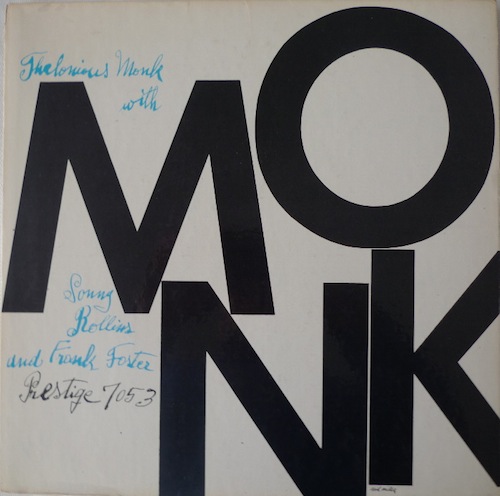
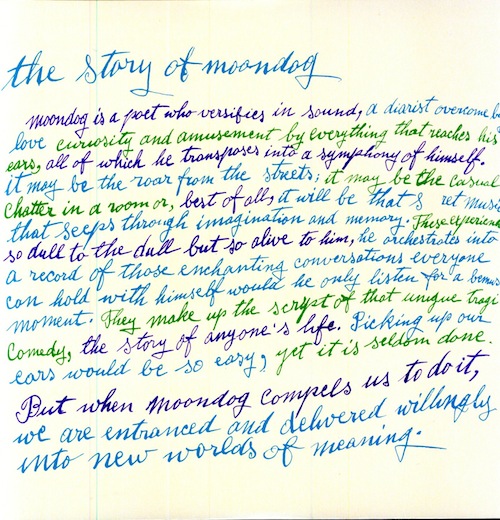

:format(jpeg):mode_rgb():quality(96)/discogs-images/R-3189752-1362818913-5059.jpeg.jpg)


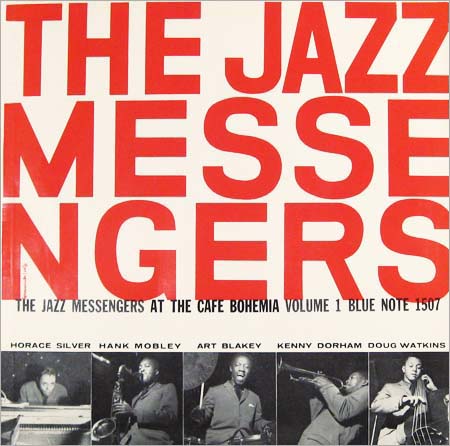




:format(jpeg):mode_rgb():quality(96)/discogs-images/R-6932044-1431719976-1607.jpeg.jpg)




